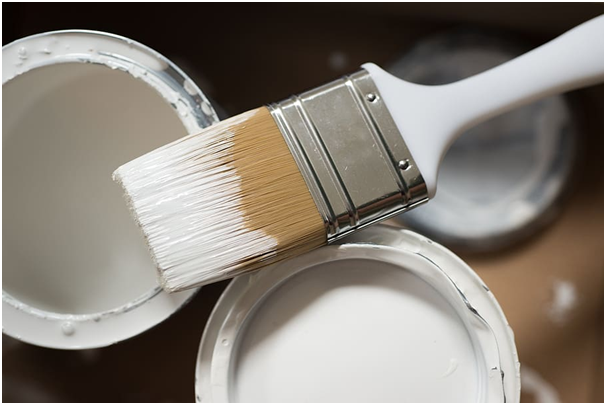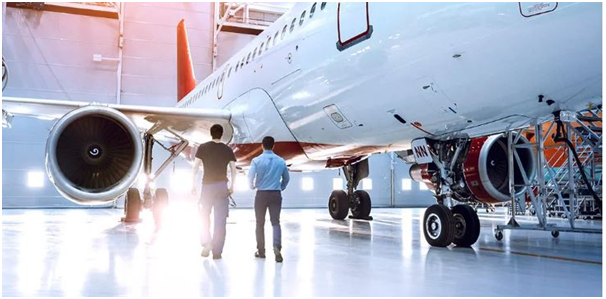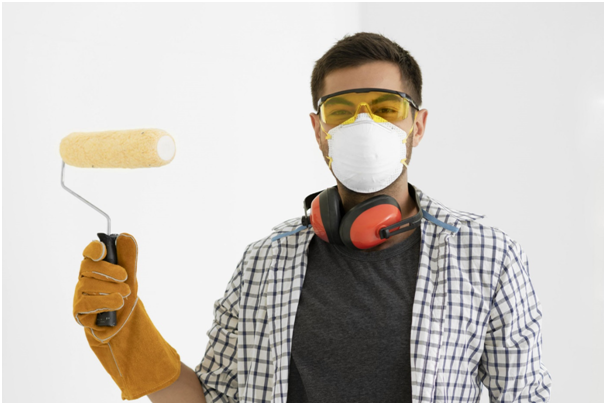Reflective paint for metal is a unique coating. It absorbs light and reflects it as visible light rays. This paint enhances visibility during nighttime.
Reflective outdoor paint for metal can be used on objects like fences and metal structures. Light reflective paint is popular among professionals. It is often used in the construction industry.
The paint has numerous safety benefits. It also has environmental impacts and aesthetic purposes. These factors make this product a favorite among customers.
This article will explore everything about reflective paint for metal. We will discuss its benefits, applications, and types. The leading manufacturer, KDMfab, offers various options.
Types Of Reflective Paint For Metal!

Choosing the right paint for metal surfaces needs careful consideration. Fortunately, several types of reflective paints can be applied to metals. These include aluminum and steel.
Below are the main types of reflective paints you can choose from.
Water-Based Reflective Paint
This paint variety is often used in industrial settings. It offers excellent protection against moisture, rust, and abrasion on metals.
Reflective paint that is water-based is easy to remove after application. It sets quickly with a strong grip. It provides reflectivity and shields against UV rays.
It also contains minimal levels of unstable organic compounds. This paint may not be optimal for all types of metal. However, it is suitable for non-iron metals like aluminum.
Solvent-Based Reflective Paint

This reflective coating relies on solvents. It has remarkable toughness and can withstand harsh temperatures. These range from negative twenty degrees Celsius to one hundred and eighty degrees Fahrenheit.
It shows exceptional adhesion to metallic surfaces. However, it has a longer drying time compared to water-based alternatives.
This coating type retains its color well. It is a suitable alternative for exterior surfaces exposed to severe weather conditions or chemicals.
Epoxy-Based Reflective Paint

This reflective coating is made with epoxy. It is a durable blend of resins and hardeners. It is perfect for withstanding tough industrial applications.
The key property of epoxy-based paint is its resistance to solvents and chemicals. It also binds perfectly.
Acrylic-Based Reflective Paint

An acrylic-based reflective paint has been created. It is fortified with a robust resin foundation.
This offers exceptional protection against harmful ultraviolet radiation. It also demonstrates remarkable adhesion qualities.
The paint has outstanding reflectivity across various settings. The drying duration may vary, though. The application of a second coat may only occur after a lapse of as much as 12 hours.
| Type of Reflective Paint | Base Material | Recommended Usage | Drying Time | Temperature Range | Suitable Metals |
| Water-based | Water | Industrial settings – Non-iron metals (e.g. aluminum) | Fast setting | N/A | Aluminum, other non-iron metals |
| Solvent-based | Solvent | Outdoor surfaces – Exposed to chemicals or harsh weather | Longer than water-based | -20°C to 180°F (-29°C to 82°C) | Most metal surfaces |
| Epoxy-based | Epoxy resin | Industrial settings – Surfaces exposed to chemicals or solvents | 8-12 hours for the first coat | N/A | Most metal surfaces |
| Acrylic-based | Acrylic resin | Various settings – Outdoor and indoor surfaces | Up to 12 hours between coats | N/A | Most metal surfaces |
Types Of Reflective Paint For Metal!
Factors To Consider When Choosing Reflective Paint For Metal!

Applying reflective paint to metal surfaces enhances visibility. It ensures a safe driving experience regardless of circumstances.
This paint is suitable for external surfaces like aluminum, steel, and stainless steel. It can also be used on concrete walls.
It creates a highly reflective surface that increases visibility from a distance. This is especially true in damp and misty conditions.
Surface Preparation
Before applying reflective paint, the metal surface must be clean. It should be free of grease, oils, dirt, or any other residue. These can affect the performance of the coating in terms of reflectivity, durability, and corrosion resistance.
The surface should be washed with a detergent, de-greased, and pressure treated. This ensures the best results. Some types of paint may require an additional primer or undercoat for better performance.
Durability
When selecting a coating, choose one with great coverage and protection. It should resist harsh weather conditions, temperature variations, and ultraviolet rays.
The coating must not crack or peel off due to thermal shock when exposed to extreme temperatures (-20°C/+80°C). It should maintain its characteristics over time. This way, the reflective effect is preserved for a longer period.
Resistance To Corrosion
Not all coatings are suitable for outdoor use. When choosing reflective paint, ask about its resistance to corrosion.
This factor can be verified through the manufacturer’s product labeling. The coating should also protect against oxidation. This ensures the metal surface remains unaffected after exposure to chemicals and outdoor pollutants.
Reflectivity
Different luminous reflectance levels are available in reflective paints. These depend on properties, pigment type, and finish. Select one with higher reflectance capacity and visibility.
A high-grade reflective paint like 3M Reflective Paint, available at KDMFab.com, provides maximum performance. It is effective even in unfavorable environmental conditions such as fog or darkness.
Coverage Area
Consider the coverage area before opting for reflective paint. Different sizes and quantity requirements should be considered. This ensures enough coating is purchased to cover the desired surface before painting and drying.
The chosen coating should cover any unevenness or irregularities on metal surfaces. The drying time and reflectivity of each coating vary, so research is necessary for a well-informed decision.
Drying Time
Reflective paints for metal need adequate drying time to become fully effective. Drying time depends on the thickness of the paint, temperature, and humidity levels. It could take anywhere from two hours to three days for a coating to dry properly.
Application Method
The paint application process can involve brush techniques, roller, or spray painting. Each technique has its own set of pros and cons.
Consider the efficiency and cost associated with each method before opting for a particular application process. This ensures the best results in the minimum amount of time.
Weather Resistance
Reflective paint applied over metal must resist extreme weather conditions and long-term exposure. Check if the chosen coating is weatherproofed with a built-in water-repellent agent. This helps keep the metal surface safe from moisture and other elements that induce corrosion.
Temperature Tolerance
Not all reflective paint types are suitable for extreme temperatures. Some retardants can handle hot environments. However, there may be limitations in cold weather.
Ensure the chosen coating is temperature resistant. If not, drastic temperature changes can cause issues. Peeling or cracking may occur, reducing overall performance.
Cost
Reflective coating prices depend on the ingredients used. When selecting a type and brand, consider your budget.
There is a significant variation in product prices across the market. For example, 3M Reflective paint by KDMFab is worth noting. It has superior reflectivity capacity.
It also has outstanding weather-resistance properties. The cost is quite nominal, making it ideal for outdoor surfaces. These surfaces need reflective paint protection.
Applications of Reflective Paint for Metal!

Demand for visibility in the dark and night sky is rising. Night reflective paint is becoming popular. It is primarily used for safety purposes.
It is used in road markings to increase nighttime visibility. It benefits vehicles and pedestrians.
These coating solutions can be applied on almost any metal surface.
Heat-reflective paint for metal has versatile applications. It is used in the industrial and commercial sectors.
It provides best heat insulation and solar energy reflections. Sign marking can be achieved with flawless results.
Industrial And Commercial Buildings

Reflective paint is common in industrial and commercial set-ups. During the daytime, they protect against sun rays. They have high levels of solar reflectivity.
They ensure quality heat insulation. This helps reduce energy bills significantly. It also provides comfort.
Reflective paints reduce condensation. They make sure walls and metallic surfaces’ paint coatings remain intact. This lasts for a long period.
Road Markings

White reflective paint for metal is commonly used in road markings. They reflect in the dark and enhance visibility. This ensures safety on roads during nighttime or foggy days.
They are usually white and orange or yellow in color. This makes them easier to identify at night.
The Federal Highway Administration (FHWA) mandates retro-reflective coating. It is required for road markings in North America and other countries.
Aerospace Industry

Reflective coatings are popular for aircraft. They provide energy efficiency and safety.
Researchers develop new technologies and techniques. These increase the aerospace vehicle’s life cycle.
Automotive Industry

Emission standards are becoming strict. Manufacturers opt for energy-efficient coatings for car sheets. These coatings help meet emission standards and norms.
Marine Industry
Metal surfaces are vulnerable in marine environments. Anti-corrosive paint is essential. These paints protect metals from corrosion and oxidation.
They shield metals from continuous exposure in the marine atmosphere. Reflective properties are considered for ships and yachts. This provides better visibility in dark, ensuring safety.
Agricultural Equipment
Reflective paints are used in rural and agricultural areas. They improve road signage on off-roads. They are used on public pathways and more.
These paints are applied to agricultural equipment like tractors. This provides visibility during farming operations. It helps drivers remain safe from road accidents at night.
Signage And Traffic Safety
Reflective paints have better visibility than normal paints. They are useful for safety signs even on foggy days.
Road signage importance should not be underestimated. They save lives with their eye-catching nature. This forces drivers to slow down.
Sports And Recreation
The reflective coating is used on bikes, running tracks, and sports equipment. It increases visibility at night.
This makes them safe from hazards due to reduced vision. They are useful for recreational purposes. Stadium ground markings can be more visible at night.
Reflective paint provides better visibility during rainy days or nights. Normal paints would be difficult and dangerous.
Art And Design
Reflective paint is used for art and design, like doors. Crafts made from metal surfaces with these paints are visually stunning.
They reflect in the dark or when exposed to light. This creates a mesmerizing effect.
Solar Panels
Solar panel efficiency has increased due to reflective coatings. These surfaces require highly reflective coatings.
This is for optimal solar energy absorption. KdmFab offers premium quality solar reflective paint for metal. This helps boost renewable energy intake without additional investment.
Techniques For Applying Reflective Paint For Metal!
Painting metal surfaces with reflective paint improves safety. Several methods of applying the paint exist.
They enhance visibility and make metal objects more obvious in low-light conditions. Brush application, roller application, and spray painting are options. Each provides unique reflective benefits.
Brush Application
Achieve a smooth and uniform appearance with a brush technique. Apply a thin coat of paint on metal surfaces. Choose a suitable bristle size for the area being painted.
Consider the intended result as well. Before commencing, mix the paint well. This ensures consistent results on all surfaces.
Roller Application
Rollers are optimal for painting large surfaces. They also work well for tricky-to-reach areas. Select a roller made from a pliable material.
Ensure it is appropriate for the reflective paint you’re using. This guarantees a uniform outcome. For maximum reflectivity, you can start at a leisurely pace.
Exert steady pressure as you guide the roller across the metal surface.
Spray Application
Spray painting is useful for large, smooth surfaces. It allows quick application and larger coverage per coat.
Protective gear is essential during the spraying process. Use masks and safety glasses to avoid inhaling paint fumes.
| Section | Technique | Technical Terms/Data |
| Brush Application | Apply a thin coat of paint | 1. Bristle size: suitable for the area being painted and the intended result |
| 2. Paint mixing: ensure even distribution of paint particles for consistent results | ||
| Roller Application | Apply paint on large surfaces | 1. Roller material: pliable material appropriate for the reflective paint |
| and tricky-to-reach areas | 2. Painting pace: slow and steady, exerting even pressure | |
| Spray Application | Apply paint on large smooth | 1. Protective gear: masks and safety glasses |
| surfaces with consistent finish | 2. Coverage: larger coverage per coat of paint |
Comparison of Reflective Paint Application Techniques for Metal Surfaces
Maintenance Of Reflective Paint For Metal!

Maintaining paintwork on metallic surfaces needs careful attention. This includes regular cleaning and inspection.
Repairs and reapplication of protective coats are also important. They keep the reflective sheen intact!
Cleaning And Washing
The first step is cleaning regularly. Wash with soap and water to remove dirt, grime, or debris. These accumulate on the surface after long outdoor exposure.
Use a soft brush when scrubbing. This avoids damaging the paintwork.
Inspection
Once cleaned and dried, inspect your metal surfaces. Check for signs of deterioration or discoloration.
These can be caused by environmental elements like rain and sun. Look for lost gloss or fading color. These indicate a need to reapply paint layers.
Touch-Up And Repairs
Corrosion, dents, and scratches can be an issue. They happen when painted metal surfaces are outdoors for too long.
Address these issues with touch-ups and repair work. Do this sooner rather than later to prevent further damage.
Use paints that match the existing layers. This ensures better adhesion with the old layers.
Protection From The Elements
Once repaired and touched up, apply protective coatings. These go on top of your paintwork. They offer long-lasting protection against weather elements.
These include wind, rain, snow, and direct UV rays. Choose coatings designed for metallic surfaces. For example, use 3M reflective paint to keep your metal looking new!
Proper Storage
When storing outdoor furniture made of painted metals, think about proper wrapping. Consider the best storage location. Choose a cool, dry environment with shelter from direct sunlight.
This preserves the paintwork better. Your furniture will look great when used again later!
Reapplication
Routinely reapply a new coat of paint to your metal surfaces. This is important as old layers rub off from long-term outdoor exposure.
For the best results, consider professional coverage. This ensures an even and true reflective paint sheen.
Professional Services
Lastly, if basic maintenance isn’t enough, seek professional help! Companies like KDM offer services.
They help preserve and upgrade your metal objects with reflective paint. Your items will look their best!
| Step | Description | Recommendations |
| Cleaning & Washing | Regularly clean metal surfaces to remove dirt, grime, and debris. | Use soap and water. Use a soft brush for scrubbing to avoid damage. |
| Inspection | Check metal surfaces for deterioration, discoloration, lost gloss, or fading color caused by environmental elements. | Perform inspection after cleaning and drying the surface. |
| Touch-up & Repairs | Address corrosion, dents, and scratches to prevent further damage. | Use matching paint compositions for better adhesion. Act promptly upon noticing the damage. |
| Protection | Apply protective coatings on top of the paintwork for long-lasting protection against weathering elements. | Use coatings designed for metallic surfaces, e.g., 3M reflective paint. |
| Proper Storage | Store painted metal items carefully to preserve paintwork. | Wrap items appropriately. Store in a cool, dry environment sheltered from direct sunlight. |
| Reapplication | Reapply new coats of paint as old layers wear off from long-term outdoor exposure. | Consider professional coverage for even and true sheen. |
| Professional Services | Seek professional help if fundamental maintenance is not enough to counter wear and tear from outdoor elements. | Companies like KDM offer services to preserve and upgrade metal objects with reflective paint. |
Maintenance of Reflective Paint for Metal
Safety Precautions For Working With Reflective Paint For Metal!

Figure 6 – Safety Precautions for Working with Reflective Paint
When dealing with reflective paint for metal objects, take safety precautions. Wear the right protective gear. Ensure the area is well-ventilated.
Additionally, store and dispose of this paint with caution. Let’s examine the safety measures needed.
Protective Equipment
Wear protective clothing, such as long pants and shirts. Cover your arms and legs while painting outdoors or in well-ventilated areas.
A long-sleeved mask is recommended to reduce contact with chemicals. Protective gloves for handling metal objects are also important.
Storage & Disposal
Store reflective paints in covered, sealed containers. This prevents paint fumes from escaping. Use a stable surface for storing the container.
Avoid placing it near combustible material like paper or wood products. When disposing of leftover paint, check with your local waste management department. Follow the appropriate disposal regulations.
Fire Safety Measures
Before applying reflective paint, check outdoor metal surfaces. Ensure they are dry and free of dirt and oils.
Start by sanding the entire object for a smooth surface. Remove any dust from your project with a dry cloth before painting.
Surface Preparation
Before you apply reflective paint on outdoor metal surfaces check that they are dry and free of dirt and oils. Start by sanding the entire object to ensure a smooth surface, and then remove any dust from your project with a dry cloth before moving on to painting.
Application Techniques
Use the correct equipment for applying reflective paint. A brush or roller designed for painting is best. Take advantage of temperatures between 41 and 60 degrees Fahrenheit.
Post-Application Care
Make sure the paint is completely dry before any contact. Shield reflective metal surfaces from direct sunlight. Apply protective coatings to the paint if necessary.
Conclusion
In conclusion, reflective paint for metal is crucial. It protects and highlights items. This paint defends against wear and tear from extreme weather.
It also offers visibility at night or in low-light areas. Its color stability makes it ideal for various applications. Reflective paint for metal house numbers is one of its prime applications.
KDMFab provides high-quality reflective paint. They offer a variety of colors and sizes. Their paint helps customers achieve their goals quickly and easily.
Clients can rest assured with their purchase from KDMFab. Their paint significantly impacts the safety of metal structures.




